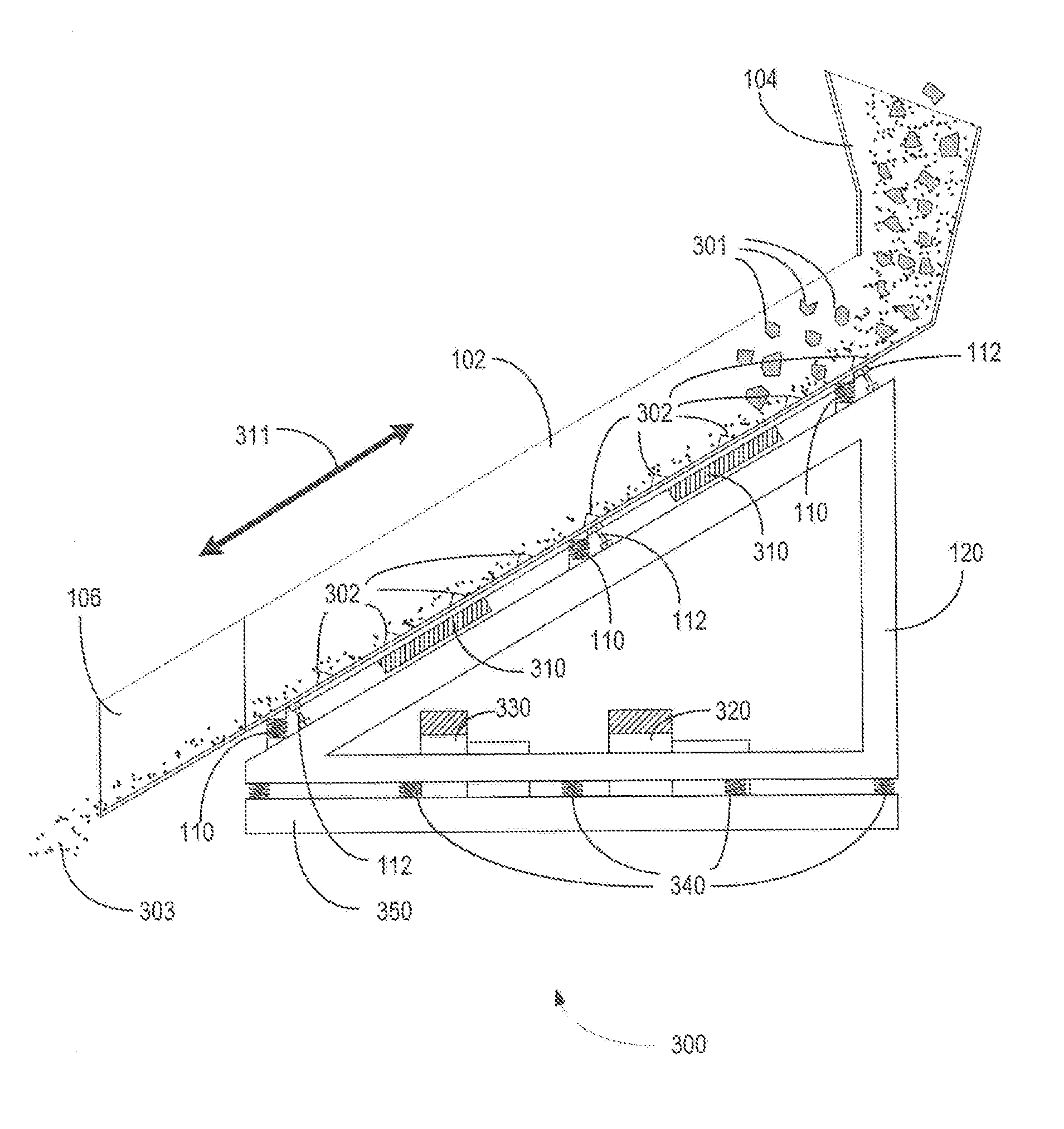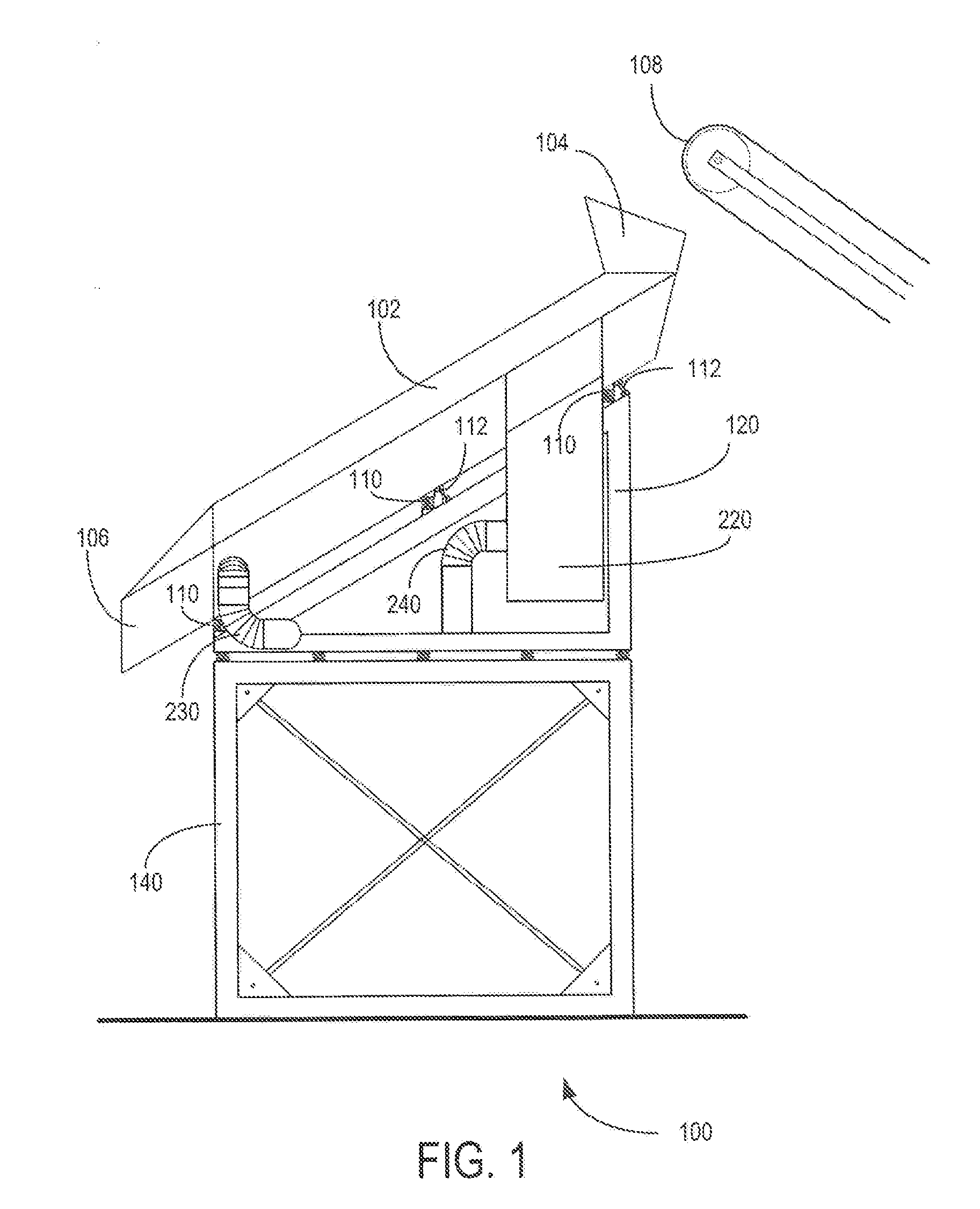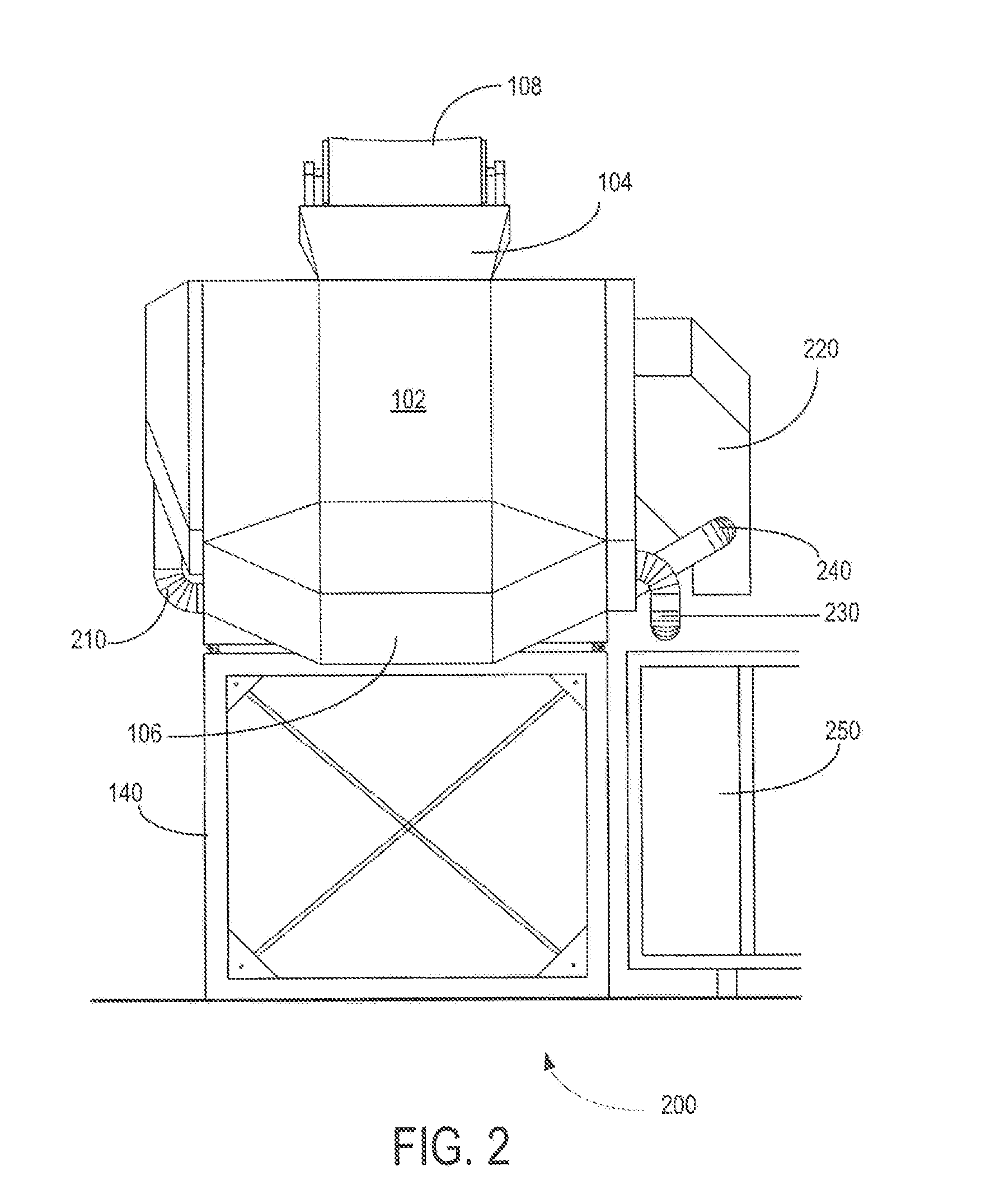Method and apparatus for separating plastics from compost and other recyclable materials
a technology for recycling materials and plastics, applied in the direction of gas current separation, separation devices, solid separation, etc., can solve the problems of difficult to achieve effective separation of plastics from organic materials, difficult to achieve the effect of unsettling in the compost material, and increasing contamination of biodegradable organic materials
- Summary
- Abstract
- Description
- Claims
- Application Information
AI Technical Summary
Benefits of technology
Problems solved by technology
Method used
Image
Examples
Embodiment Construction
[0015]As noted above, the present disclosure relates generally to a method and apparatus for separating plastics contaminants from compost materials. The method and apparatus can effectively remove plastics contaminants of all shapes and sizes from compost and woodchips under a wide range of compost moisture content conditions.
[0016]By way of example, and not by way of limitation, FIG. 1 shows an illustrative apparatus in accordance with an embodiment. As shown in FIG. 1 and FIG. 2, apparatus 100 includes an inclined trough 102 having a feed entry 104 at a top end to receive unprocessed compost from a conveyor 108, and a materials discharge end 106 at a bottom end to discharge processed compost. Trough 102 is normally covered such that trough 102 is substantially enclosed above and below.
[0017]Still referring to FIG. 1 and FIG. 2, trough 102 is preferably mounted on a plurality of flexibly resilient supports 110. The flexibly resilient supports 110 may be steel springs, for example,...
PUM
 Login to View More
Login to View More Abstract
Description
Claims
Application Information
 Login to View More
Login to View More - R&D
- Intellectual Property
- Life Sciences
- Materials
- Tech Scout
- Unparalleled Data Quality
- Higher Quality Content
- 60% Fewer Hallucinations
Browse by: Latest US Patents, China's latest patents, Technical Efficacy Thesaurus, Application Domain, Technology Topic, Popular Technical Reports.
© 2025 PatSnap. All rights reserved.Legal|Privacy policy|Modern Slavery Act Transparency Statement|Sitemap|About US| Contact US: help@patsnap.com



